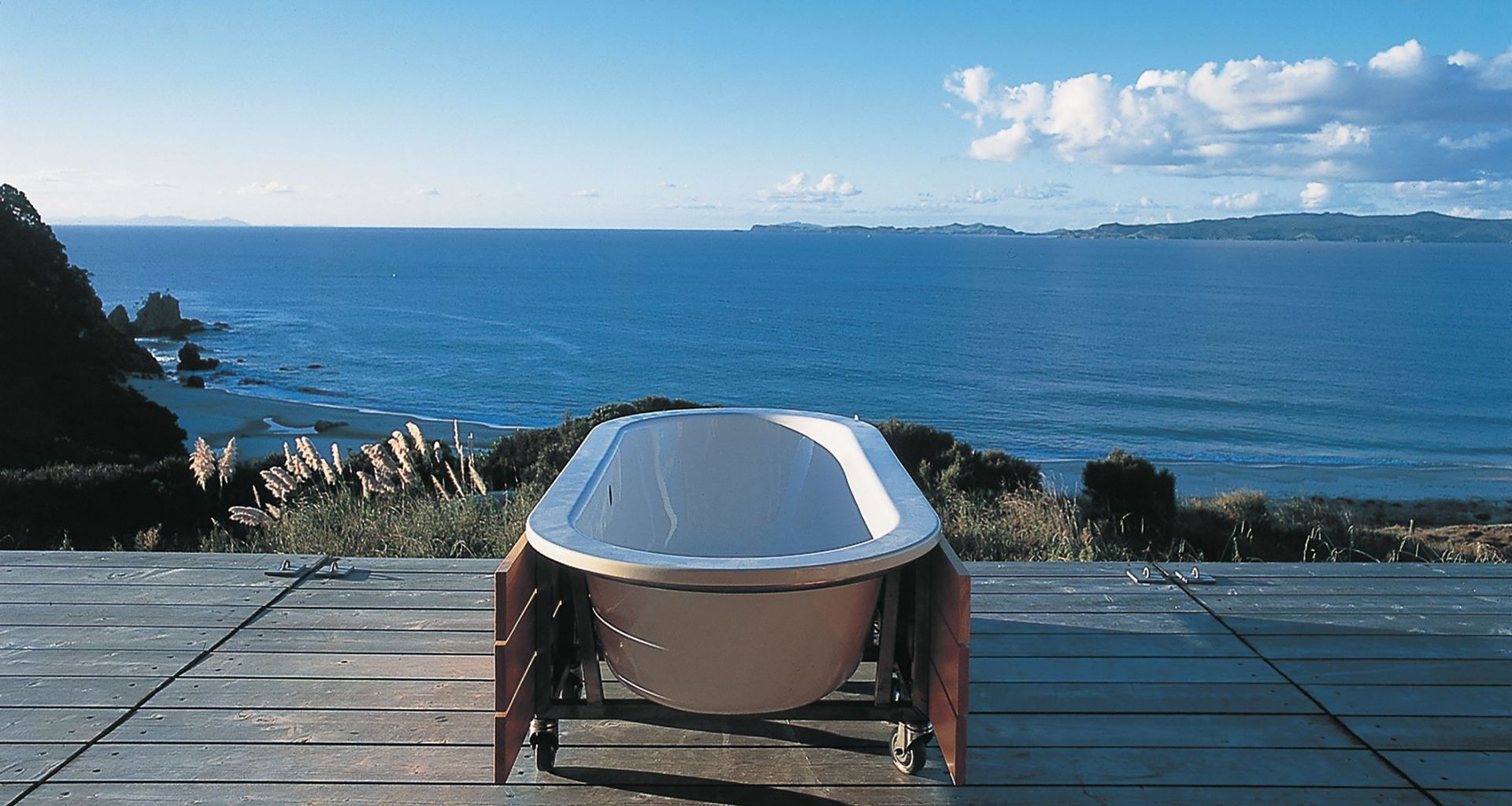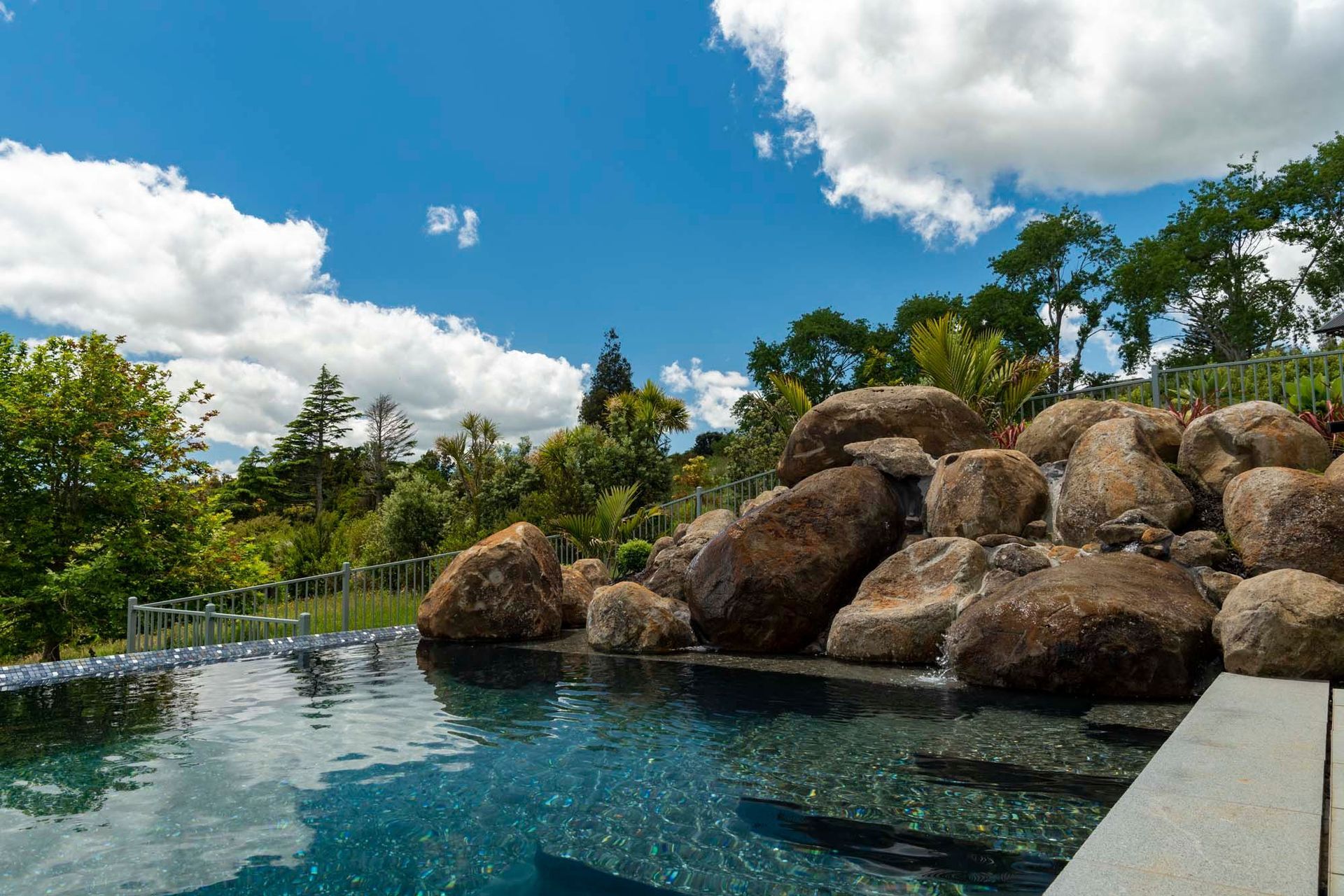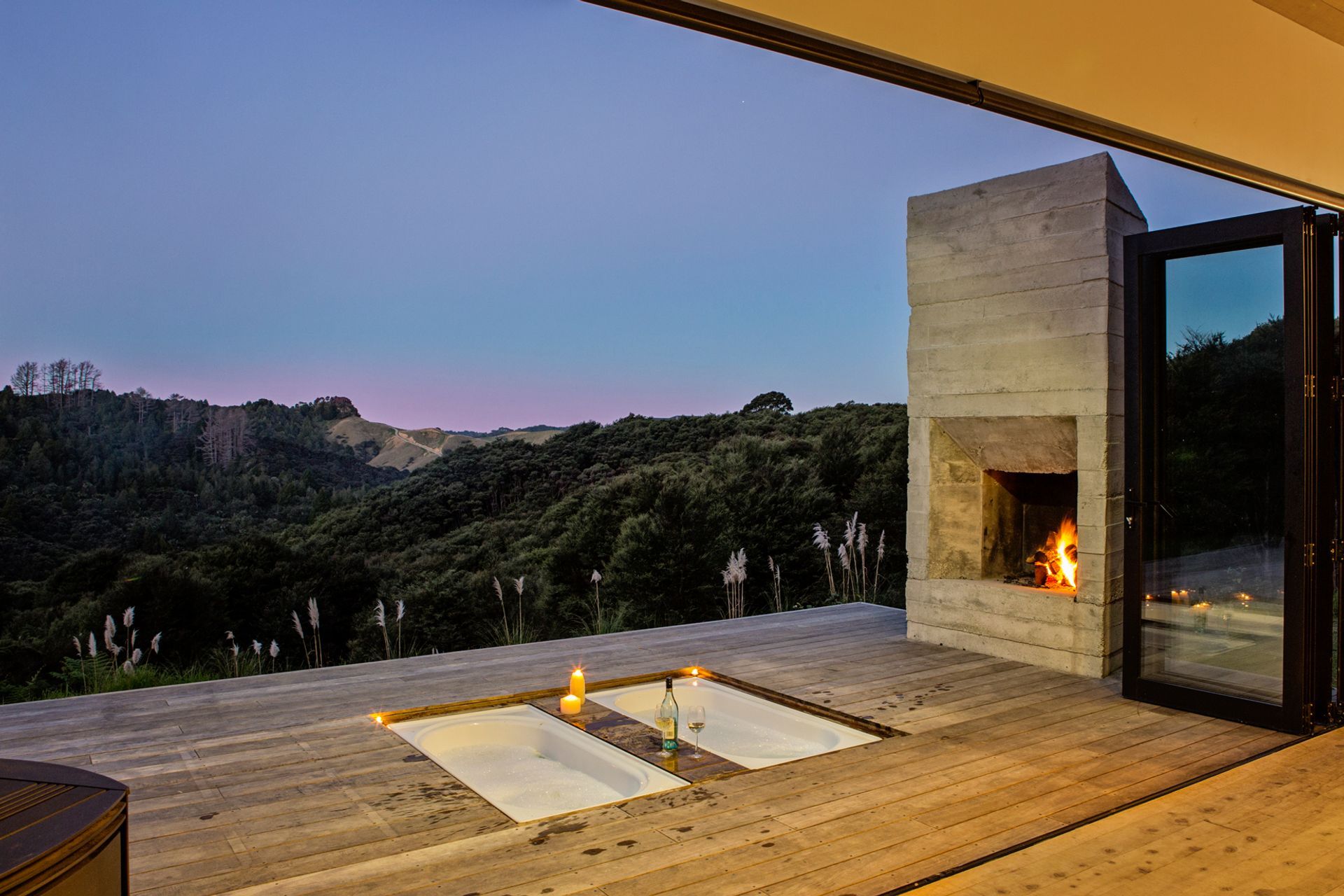The sensory world of outdoor bathing

Bathing outside is more popular than ever, now that our homes are increasingly set up for outdoor living and being built beside beaches and rivers. Bathing outdoors – whether you’re a shower addict, a bath lover, or torn between the two – is also a multi-sensory experience where nature takes over.
Taking a shower or bath in the great outdoors isn’t just about taking a quick rinse after a dip in the pool or a day at the beach, or even a relaxing soak in a bubble bath with a glass of wine when you have some spare time or your muscles are sore from exercising or gardening.
Outdoor bathing is a dynamic experience that’s about enjoying cool raindrops on the skin; the warmth of the sun; the beauty of sunsets, sunrises and starscapes; a chorus of birdsong; the sounds of plants rustling in the breeze, or the delicious smells of scented plants.
In the heart of Swedish Lapland, there is even a floating bath hotel, the Arctic Bath, that opens in 2020 and invites guests to enjoy traditional Swedish cold baths in a communal cold plunge pool that is open to the elements. The site, on the Lule River, alternates between frozen and floating depending on the season.
Here in New Zealand, it is no surprise that outdoor bathing is becoming more fashionable, especially since swimming is so popular, with 3.5 million people visiting beaches and more than 1.1 million participating in swimming each year.

Living pools
A greater focus on healthy living is not only helping to fuel our desire for outside bathing, there is also a developing trend for living and natural pools, which are like giant baths that are free of chemicals. Living pools stay clean with bio-filtration systems – a underground bio and phosporous filter that purifies the water and keeps it alive.
Natural pools are regulated in a more organic way than living pools and appear more like a natural feature of the landscape. They combine natural filtration – using stone, sand and gravel – and a neighbouring ecosystem of aquatic plants and microorganisms that oxygenate the water and filter it through their root systems. Fish can even be added to a natural pool, creating a different experience and helping to keep insects at bay.
Outdoor showers and baths – moving the indoors outside
The most common outdoor showers are simple facets attached to the side of the house, where the water drains back into the garden or an outside drain, or a simple timber of concrete cubicle attached to a pool house. However, these are becoming more luxurious, lined in cedar or colourful tiles, with rain shower heads, and sliding or pivot doors that can open a space up to the elements.
Privacy isn’t necessarily created by doors, slatted walls or screening anymore either, but by clever landscaping, such as hedges, shrubs and tropical planting. Sweet-smelling plants like mint and thyme can be grown in between pavers so they waft up their scent when you step on them.
Go minimal and install a freestanding shower head that loops straight up from the deck, so there is no need for drainage or enclosures.
Adding interesting features, such as colourful solar-powered lighting, an artwork or a hole at eye-height that forms a framed view of a portion of the surrounding landscape can add playful elements to an outdoor area, so long as they suit the style of architecture.
Old baths repurposed for outdoor bathing have become popular in recent years, and there are hundreds of modern freestanding baths that are suitable for outdoor bathing. These are usually installed on top of terrace of some kind, such as a deck, gravel or concrete area, although they can also be inserted into a deck for example. This version is versatile too because it can be covered up with a hatch or a table when not in use. Clearly, they need to be plumbed in, although an old-school wood-fired bath that can be filled with an outside tap is achievable.
And don’t forget the essentials like hooks for towels and bathing costumes, a chair or seating to sit down and dry your feet and, of course, a view of the sky completes the connection with nature.
DIY summer project
If you’re in need of a summer project, then it is possible to build your own outdoor bathing area, although there are three four aspects to consider before you start.
1. The location needs to be practical with access to plumbing, unless you’re hooking it up to the outside tap. Typically, it should be sited near the back door of the house or near the pool, to rinse off easily before entering the house. It is also best to choose a sunny spot to avoid unwanted guests, such as mould and moss, from appearing.
2. Privacy is important, unless it’s just being planned for a quick rinse-off. Build with shy people in mind because you want the experience to feel natural and comfortable for friends and family. Planting and screening are the most economical way of achieving privacy.
3. Drainage is important. The most sustainable solution is to allow used water to drain into the garden, otherwise it can be recycled within the pool filtration system or channelled along gravel into the drainage system.
4. There are a myriad of options to choose from in terms of taps, baths, screens, etc, so check out our design board here for some inspiration.
Banner image: Coromandel Bach by Crosson Architects. Photograph by Patrick Reynolds (1).
Other Photography: Supplied (2 and 3), Jackie Meiring (4)
References: Water Safety New Zealand, Arctic Bath.


